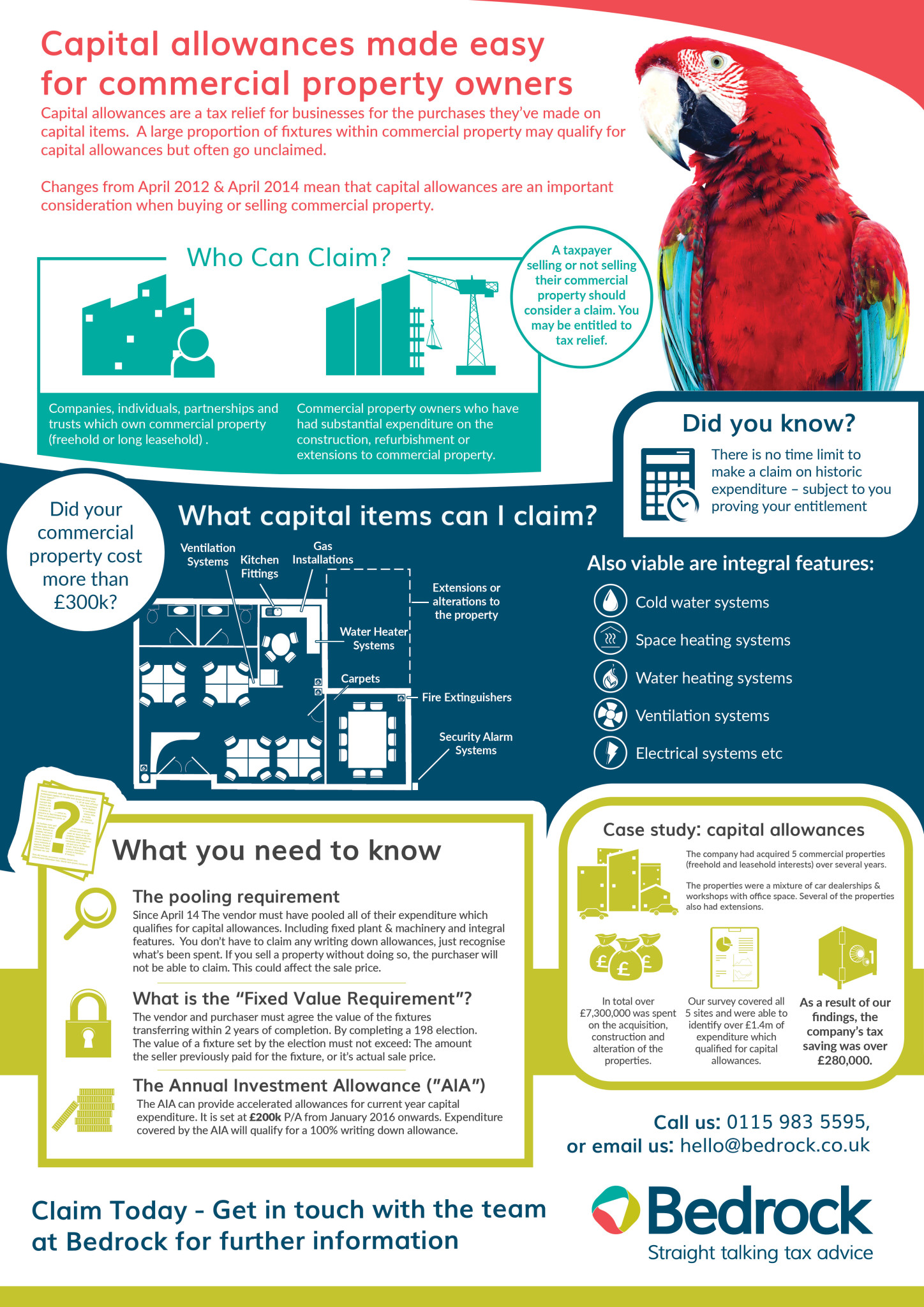We have put together this infographic to make capital allowances simpler to understand. We know there are lots of commercial property owners who have not yet claimed this established tax relief on their properties and are maybe unsure of how to claim and what they need to do to complete the process. If you own a number of commercial properties or a single property which cost more than £300,000 it’s worth talking to us about how to benefit from capital allowances. Our experienced team can guide you through the process and ensure the benefits are considered in the round alongside any other tax implications for your business.
Our infographic provides a guide to what you need to know about capital allowances, contact us today to find out more.

Share our infographic on social media and on your site by copying the code below.
Infogrpahic Transcript
Capital Allowances made easy for Commercial Property Owners
Capital allowances are a tax relief for businesses for the purchases they’ve made on capital items. A large proportion of fixtures within commercial property may qualify for Capital Allowances but often go unclaimed.
Changes from April 2012 & April 2014 mean that capital allowances are an important consideration when buying or selling commercial property.
Who can Claim?
- Companies, individuals, partnerships and trusts which: Own commercial property (freehold or long leasehold) which cost more than £300k.
- Commercial Property owners who have substantial expenditure on the construction, refurbishment or extensions to commercial property.
A taxpayer selling or not selling their commercial property should consider a claim. You may be entitled to tax relief.
What capital items can I claim?
Did your commercial property cost more than £300k? If it did, talk to us to discuss claiming Capital Allowances on the following:
- Water heating systems
- Ventilation systems
- Security alarm systems
- Fire Extinguishers
- Gas installations
- Carpets
- Extensions or alteration to the property
- Kitchen fittings
Also Viable are Integral features
- Cold water systems
- Space heating systems
- Water heating systems
- Ventilation systems
- Electrical systems
What you need to know
The Pooling Requirement
Since April 14 the vendor must have pooled all of their expenditure which qualifies for capital allowances. Including fixed plant & machinery and integral features. You don’t have to claim any writing down allowances, just recognise what’s been spent. If you sell a property without doing so, the purchaser will not be able to claim. This could affect the sale price.
What’s the “Fixed value requirement”?
The vendor and purchaser must agree the value of the fixtures transferring within 2 years of completion. By completing a 198 election.
The value of a fixture set by the election must not exceed: The amount the seller previously paid for the fixture, or it’s actual sale price.
The Annual Investment Allowance (‘AIA’)
The AIA can provide accelerated allowances for current year capital expenditure. It is set at £200k P/A from January 2016 onwards. Expenditure covered by the AIA will qualify for a 100% writing down allowance.
Case Study: Capital Allowances
- The company had acquired 5 commercial properties (freehold and leasehold interests) over several years.
- The properties were a mixture of car dealerships & workshops with office space. Several of the properties also had extensions.
- In total over £7,300,000 was spent on the acquisition, construction and alteration of the properties.
- Our survey covered all 5 sites and were able to identify over £1,400,000 of expenditure which qualified for capital allowances.
- As a result of our findings the company’s tax saving was over £280,000.
